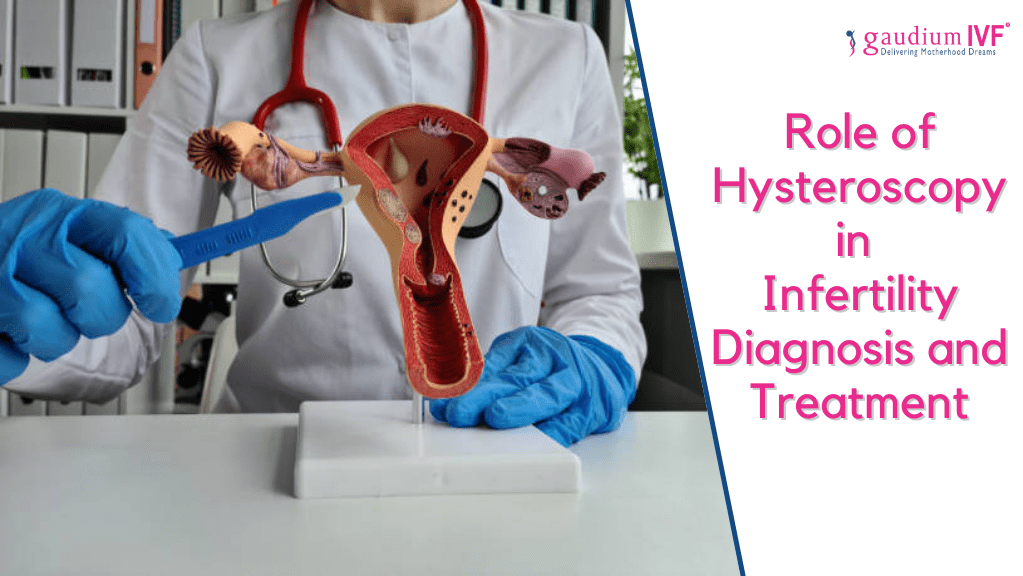If you are facing chronic lower abdominal pain and heavy bleeding during periods consistently for unknown cause or, if you are trying to conceive, your doctor might ask you to go for a hysteroscopy. This minimally invasive procedure has transformed the field of gynecology, offering a clearer view of the uterus and enabling doctors to diagnose and treat a wide range of diseases.

What is Hysteroscopy?
Hysteroscopy is a medical procedure that involves the insertion of a thin, lighted tube called a hysteroscope into the uterus through the cervix. A saline-like liquid or gaseous carbon dioxide will be pushed into the uterus to expand it. A tool named a speculum is used for keeping the vagina open. You will know this tool if you have ever had a Pap smear done. This allows doctors to examine the inside of the uterus and its lining. Hysteroscopy can be performed for diagnostic purposes to investigate issues like abnormal bleeding, infertility, or repeated miscarriages, or for therapeutic reasons, where it allows for the removal of uterine polyps, fibroids, or other abnormalities.
In some cases, general anesthesia is also given. In case your doctor finds something abnormal, she will take a sample for testing later on.
Diagnostic and Therapeutic Applications:
1. Diagnostic Hysteroscopy: This procedure helps identify the main causes of various gynecological problems, such as unexplained bleeding, pelvic pain, or recurrent miscarriages. Doctors can visually inspect the uterine cavity for abnormalities like polyps, fibroids, adhesions, or structural issues.
2. Therapeutic Hysteroscopy: Hysteroscopy also serves as an effective treatment tool. It allows doctors to perform minimally invasive surgeries, such as removing polyps, fibroids, or scar tissue, and correcting uterine anomalies, often preventing the need for more invasive procedures
Benefits of Hysteroscopy:
1. Minimally Invasive: Hysteroscopy is minimally invasive, reducing pain and scarring
2. Accurate Diagnosis: It provides a clear, direct view of the uterine cavity, aiding in accurate diagnosis and targeted treatment.
3. Improved Fertility: For women struggling with infertility due to uterine issues, hysteroscopy can be a good option to address these issues.
4. Reduced Hospital Stay: Many hysteroscopic procedures are outpatient, meaning shorter hospital stays and quicker recovery times.
After the procedure:
Before a hysteroscopy, your doctor will provide instructions on how to prepare, which may include fasting or medication. The procedure is usually performed under local or general anesthesia. You will be able to go home right after getting a hysteroscopy for infertility. There might be some spotting or cramping for a couple of days after the procedure. Hysteroscopy before IVF might also give you gas for some days. The doctor will give you medications for the pain.
You just have to make sure that you rely on the Best Infertility Clinic with highly experienced doctors for your treatment when going for hysteroscopy.
Conclusion:
Hysteroscopy is a remarkable medical advancement that has transformed the world of gynecological care. Its diagnostic and therapeutic capabilities have provided new hope for women facing fertility challenges and uterine issues. With its minimally invasive nature, accuracy, and shorter recovery times, hysteroscopy is a valuable tool in the field of gynecology.
With the help of hysteroscopy, the Best IVF Centre in Delhi, Gaudium IVF provides you with the best IVF treatment at an affordable cost.



